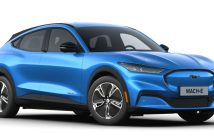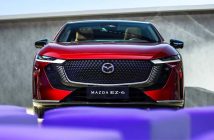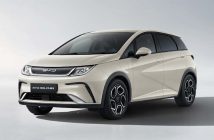+++ It may not have escaped your attention that the BMW X6 M is only being offered as a Competition model. That’s not because the SUV is waiting for a standard M variant, but instead because the automaker plans to make the Competition models the new starting point for full-on M models. The move is part of a plan to reconfigure the M lineup as the automaker looks ahead to the future. With lower-performance models like the M440i filling the gap between BMW’s regular vehicles and its high-performance models, Frank van Meel, CEO of BMW M, believes there’s no longer a need for the standard M model. The M brand “introduced the Competition layer, which actually now has become the new normal”, van Meel told. “So the standard M will go away or more or less already has gone away… we’re not going to split any longer between M and M Competition, it will all be Competition in the future”. As a result, the M3 Competition, for instance, will become the preferred choice for those in search of a high-performance BMW sedan. However, this doesn’t mean there won’t be options for buyers who desire even more performance. Van Meel explains that the CS and CSL models are being introduced to provide an even more extreme performance option than the Competition model. He states, “Those are the more hardcore vehicles. If you say, ‘No, I really want to have a track tool with the number plate’, then you go for the to CS or CSL”. The impact of these changes on the pricing of M vehicles is yet to be determined. However, it’s possible that the starting price of the lowest-performance M model could increase as a result. +++
+++ CHINA has expanded its presence in the European sales charts, with buyers flocking to a slew of new models being designed and built in the Far East. Throughout August, the likes of BYD and MG have proved to be sales hits, in many cases beating established equivalent offerings from within the EU. The latest data represents 95 percent of new car sales in the European Union, EFTA countries and the United Kingdom and comes amidst close scrutiny of China “flooding” Europe with affordable cars. MG is one of the biggest winners in the list, with the popular ‘4’ making Europe’s top 40 best-selling list. The ZS is close behind, in 44th place. Total European sales for the brand in August were almost triple what they were in the same month last year, with 14.411 units being shifted vs. 5.338 previously. MG managed to shift more units last month than Volvo, Suzuki and Mini. BYD, bolstered by its growing European footprint, sold 2.685 cars last month. A model-by-model sales report shows a marked improvement from the 186 it delivered in August 2022. The largest new-energy vehicle producer in the world saw sales of its Atto 3 (2.559) take the lion’s share of the pie. The Atto 3 even managed to outsell cars like the Mercedes E-Class and the BMW 5-Series and 4-Series. Polestar saw similar results, with all its vehicles now originating in China. The Volvo spinoff saw sales skyrocket by 250 percent in August, while Lotus, Ora, BYD, Great Wall, Nio, Xpeng and MG reported similar successes. Each company had triple-digit increases in sales compared to last year. The figures tally with previous reports concerning China’s new-found dominance in Europe, with a metaphorical flood of EVs coming for the continent. Data shows Chinese new energy vehicle shipments (which include both hybrids and EVs) to the European Union increased by 112 percent in the first 7 months of 2023 and a staggering 361 percent from 2021. Such is the demand that China’s car makers are looking for new ships to transport vehicles. Meanwhile, the European Commission has not taken the emergence of a new EV superpower lightly. The bloc announced that it was looking into the increase in demand for Chinese EVs, with possible tariffs mooted. However, a verdict isn’t expected to be delivered for another 13 months. EU leaders are looking to level the playing field, with European Commission President Ursula von der Leyen saying: “Global markets are now flooded with cheaper electric cars. And their price is kept artificially low by huge state subsidies”. France, on the other hand, has moved full steam ahead with their new legislation. Fresh standards reclassifying which EVs are eligible for subsidies will come into play in December. The changes factor in how green the energy used in vehicle manufacturers was, and it’s expected to exclude most Chinese EVs due to the prevalence of coal-generated power in the auto industry. It’s not just Chinese manufacturers that have been making waves, though. Non-Chinese and non-China-dependent brands such as Jeep, Lexus, Cupra and Renault were all able to record increases in sales volumes. Tesla, which imports most of its European-delivered Model 3 and Model Ys from China, sold 30.679 cars in August, although some Model Ys that were made in Germany would have contributed to that. Volkswagen was up by 12 percent, but, along with BMW, Kia and Toyota, their percentage gains were below the market’s overall increase of 22 percent from July. +++
+++ Europe is investigating whether electric vehicles made by Chinese automakers benefit from unfair subsidies, and how it should react. However, the probe, accused by some of being protectionist, could cut both ways, as it may also impact nominally EUROPEAN VEHICLES THAT ARE MADE IN CHINA . The European Union’s executive vice president, Valdis Dombrovskis, said on the heels of a trip to China that the investigation will not be limited exclusively to vehicles made by companies headquartered in the country. “Strictly speaking, it’s not limited only to Chinese brand electrical vehicles, it can be also other producers’ vehicles if they are receiving production-side subsidies”, Dombrovskis told, responding to a question about brands like Tesla and Geely. The former, although headquartered in the U.S., receives a number of unusual advantages from China, such as the freedom no to have to collaborate with a local joint venture partner, as well as tax breaks, cheap loans, and other forms of assistance. These have made it easier for Tesla to build Model 3s in Shanghai and export them to other markets, such as Europe. Meanwhile, Geely owns Volvo and Polestar, both of which produce electric vehicles in China, despite still considering themselves to be European brands. In addition, automakers like BMW and Renault produce vehicles in China that are sold in Europe, including the iX3 and Dacia Spring respectively. The European Union announced its anti-subsidy investigation earlier this month. The second-largest market for electric vehicles in the world (China is number 1), it has become a valuable marketplace for Chinese EV manufacturers that have had the opportunity to build up their manufacturing networks thanks, in part, to that country’s subsidies. As European automakers now fight to get their own EV manufacturing infrastructure up to speed, the EU is concerned that China’s early start may give it an advantage over its automakers, and may make local production sites vulnerable. For its part, China appears to be watching the EU’s investigation closely, as it seeks to promote the interests of its automakers. With the U.S. market effectively closed to China as a result of a 27.5 percent tariff, Europe is fertile ground for its automakers to grow sales. However, depending on the results of the EU’s investigation, fears that American-style tariffs could come into place are prompting strong reactions from Chinese politicians, Dombrovskis said. +++
+++ FORD had grandiose ambitions for the all-electric Mustang Mach-E in China, believing that it could dethrone the Tesla Model Y by selling it directly to consumers through its ‘Ford China 2.0’ plan. However, the car manufacturer has since abandoned this sales model and the Mustang Mach-E is selling in far more limited numbers than Ford had expected. The company kicked off its direct-sales business in 2021, mimicking the successful strategy pioneered by Tesla. It also launched an EV subsidiary in Nanjiang around the same time and soon after, launched the Mustang Mach-E onto the local market, priced from 265.000 yuan ($36,275). Fast forward to 2023 and Ford is only selling a few hundred Mach-Es in China each month and its market share of the local EV space has fallen to a mere 2%. Ford shut down its direct-sales business in China last month. As such, the Mustang Mach-E, as well as other local electric offerings like the Ford Evos (a SUV) and Escape (Kuga) PHEV, will be sold through dealerships. “Their EV strategy for China was the Mach-E. When that didn’t work out, they didn’t have anything”, Sino Auto Insights founder Tu Le said. Interest in the Mustang Mach-E has not been as strong as Ford has expected. A key reason for this is that it has a shorter range than many other EVs on sale, like the Xpeng P7 and the Tesla Model Y. In addition, it is not as laden with technologies and features as some of the local alternatives. Ford underestimated the crowded EV market in China, had execution problems and failed marketing and sales strategies. In addition, the launch and deliveries of the Mustang Mach-E were delayed for several months while Ford was experiencing battery procurement issues as supplier BYD shifted its focus to a different kind of battery. As of last month, Ford’s joint venture with Chongqing Changan Automobile had taken control of Mach-E sales while Ford looks to establish a “lower investment, learner, much more focused business in China”, chief executive Jim Farley confirmed. +++
+++ LUCID has opened its first international manufacturing facility and it’s located in a rather unusual place: Saudi Arabia. Known as Advanced Manufacturing Plant 2 or AMP-2 for short, the facility has begun semi knocked-down (SKD) assembly of the Air and is expected to have an annual capacity of 5.000 units. The SKD kits are “pre-manufactured” at the company’s plant in Casa Grande, Arizona and then shipped to the Middle East for assembly. This process is only supposed to be temporary as the plant intends to become a fully fledged production facility “after the middle of the decade”. If everything goes according to plan, the production capacity will increase to 150.000 units annually. More importantly for locals, the workforce is expected to grow from the hundreds into the thousands. Vehicles made at the plant will be sold in Saudi Arabia as well as undisclosed export markets. The company was coy on specifics, but said “Jeddah’s position on the Kingdom’s Red Sea coast already offers robust supply chain access by land and sea and enables Lucid to export its finished luxury electric vehicles to other regions in the future”. Lucid CEO Peter Rawlinson said: “We are delighted to make history today in Saudi Arabia by opening the country’s first car manufacturing facility, which will produce our award-winning electric vehicles and support the country’s vision for a more sustainable and diversified economy”. His sentiments were echoed by Lucid’s Middle East managing director, Faisal Sultan, who stated “The opening of our facility today marks the beginning of our production operations to assemble our world class Lucid Air. AMP-2 in KAEC, in addition to our existing AMP-1 facility in Arizona, gives us the ability to efficiently fulfill the recently signed agreement with the government of Saudi Arabia to purchase up to 100.000 vehicles over a 10-year period, with an initial commitment to purchase 50.000 vehicles and an option to purchase up to an additional 50.000 vehicles over the same period”. Lucid said the company received “significant support” from the Ministry of Investment of Saudi Arabia, the Saudi Industrial Development Fund, and the King Abdullah Economic City. This shouldn’t be surprising as Reuters noted Saudi’s Public Investment Fund owns over 60% of the automaker. +++
+++ It was almost 2 years ago when MAZDA practiced its rebadging skills with the EU-spec ‘2 Hybrid’ which was an identical twin to the Toyota Yaris. In a quest to differentiate the siblings so that people have an actual reason to choose one over the other, Mazda updated the supermini with a redesigned exterior, while giving it a few tech upgrades. The debut of the facelifted Mazda 2 Hybrid for Europe comes a few days after the totally unrelated and mildly updated ‘2’ was introduced in Japan. The guys in Mazda’s European Design Studio tried their best to alter the appearance of the Toyota-engineered model. While the doors, fenders, lighting units, bonnet, roof and greenhouse, are still sourced from the Toyota Yaris, the 2 Hybrid now gains a unique front bumper and tailgate garnish. The new grille and intakes give a Mazda feeling to the exterior design, making us wonder why the company didn’t do that from the start. The body-colored tailgate garnish is also a nice touch, although it makes the cut-out taillights look like an afterthought. Inside, the Mazda2 Hybrid benefits from the same upgrades found on the recently facelifted Toyota Yaris. This means that the Japanese supermini gets the 12.3-inch digital instrument cluster, the head-up display and the larger 10.5-inch infotainment touchscreen, which come standard in the flagship Homura Plus trim alongside a panoramic sunroof and dual-zone climate control. The entry-level Prime-line trim comes with a 9 inch infotainment, although if you want a 4-speaker audio you have to upgrade to the Center-line. For 16 inch alloy wheels, you need to step up to the Exclusive-line, with the higher-spec Homura and Homura Plus getting 17 inch wheels and full LED lights. Interestingly, Mazda didn’t get access to the more potent version of Toyota’s self-charging hybrid system that makes 130 hp in the facelifted Yaris. This means that the electrified powertrain produces the same 116 hp from a 1.5-liter three-cylinder engine and a single electric motor. Power is transmitted to the front axle through a CVT gearbox, while a lithium-ion battery allows the model to often drive in EV mode in urban environments. As a result, fuel consumption in the WLTP combined cycle is still rated at 3.8-4.0 liter/100km with CO2 emissions being limited to 87-97 gram/km depending on the wheel size. As for performance, the supermini accelerates from 0-100 km/h in the same 9.7 seconds and has a top speed of 175 km/h. Mazda didn’t announce pricing for the facelifted model but we wouldn’t be surprised if it gets more expensive compared to its predecessor following the rest of the segment in this upward spiral. The regular ‘2’ which was facelifted earlier this year remains available in Europe, as a cheaper alternative to the 2 Hybrid. By offering 2 different models in the supermini segment, Mazda is lowering its fleet emission average in the Old Continent, without the need to develop an electrified offering by itself. By 2030, the company plans on offering a range of EVs covering “the most important segments of the European market”. +++
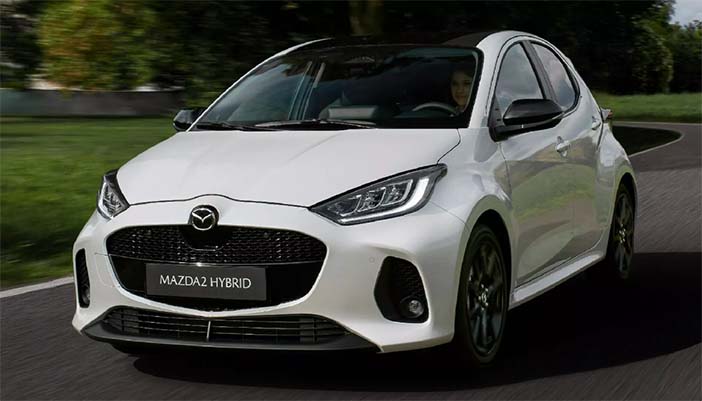
+++ The POLESTAR 3 was introduced nearly a year ago, but the electric crossover is inching closer to production. While the model was originally slated to be built in mid-2023 with deliveries beginning around now, that isn’t happening as the crossover is still undergoing testing. In particular, Polestar said prototypes recently spent two weeks in the United Arab Emirates for “extreme hot weather testing”. These tests occurred in August as engineers wanted to “fine-tune the climate system in the hottest of environments”. As such, the Polestar 3 was subjected to temperatures of up to 50° C. Polestar CEO Thomas Ingenlath didn’t talk about the delay, but he said “The Polestar 3 development and testing program is progressing well, and I expect production to start in the first quarter of 2024”. He went on to say the crossover is “at the start of its journey” and potential customers can visit select Polestar Spaces to check out “Polestar 3 prototype display cars”. As a refresher, the Polestar 3 has a dual-motor all-wheel drive system producing 489 hp and 840 Nm of torque. This enables the crossover to accelerate from 0-100 kph in approximately 5 seconds, before hitting a top speed of 210 km/h. Customers can opt for a Performance Pack, which lowers the 0-100 kph time to 4.8 seconds while increasing the output to 517 hp and 909 Nm of torque. Besides the improved performance, the package adds a sportier air suspension, ‘Swedish gold’ details and unique 22-inch wheels wrapped in Pirelli P-Zero tires. Power is provided by a 111 kWh battery pack, which is slated to provide a range of up to 610 km in the WLTP cycle. +++
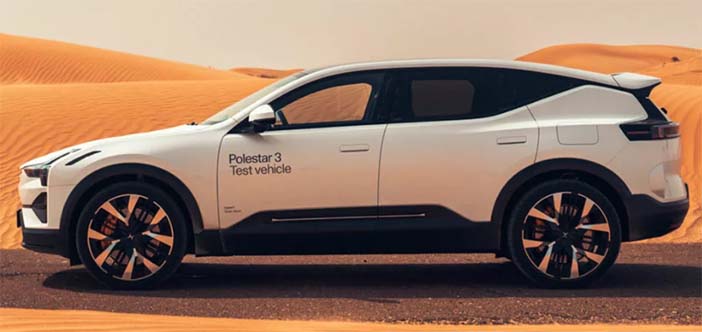
+++ In the United States, it’s becoming increasingly difficult for carmakers to turn a customer into a REPEAT CUSTOMER , according to a recent study. An unexpected side effect of the chip shortage is that drivers who kept their car for longer than they’re used to are going to the competition to try something new. “As vehicle availability increased and more choices hit the market, loyalty among brands as a whole saw a decline in 2023. Additionally, owners were tied down to their vehicles for longer than normal due to ongoing supply chain disruptions, and as a result were more likely to experience problems with their vehicles. Now that some of those issues have eased, consumers are looking to get behind the wheel of something different and are no longer remaining as loyal to a brand”, said Tyson Jominy, J.D. Power’s vice president of data and analytics. J.D. Power analyzed trade-in data from September 2022 to September 2023 to compile a list of the brands that new-car buyers are most loyal to. Porsche took first place in the premium car segment for the second consecutive year with a loyalty rate of 56.8%; Mercedes-Benz finished second with 50.5%. In the premium SUV segment, Volvo and BMW took first and second with 56.5% and 56.1%, respectively. Moving down to the mainstream car segment, Toyota took first place with 60% while Honda finished in second place with 55%. In the mainstream SUV segment, Subaru enjoys the highest loyalty rate (61.1%) while Toyota isn’t far behind (60.5%). Unsurprisingly, Ford takes first place in the pick-up segment with a 64.6% loyalty rate; that’s the highest score in the study. Toyota finished second with 60.4%. Comparing 2023’s numbers to 2022’s sheds light on several interesting patterns. Ford and Toyota ruled the truck segment in 2022 as well, but they posted figures of 63.8% and 58.7%, respectively, so they managed to buck the trend. Subaru and Toyota swapped places in the mainstream SUV segment and both lost buyers (they finished 2022 with 62.6% and 63.6%, respectively), while Kia took second place in 2022’s mainstream car segment with 54.1%. BMW’s loyalty rate in the mainstream SUV segment dropped by 2.5%, which explains why it took second place in 2023, and even the allure of owning a Porsche has faded slightly: its loyalty rate checked in at 57.4% in 2022. +++
+++ While there’s plenty to like about the SUBARU WRX , the lack of any particularly serious variant has felt a little strange. For more more than a decade, Subaru offered the STI version with even more power and some choice chassis upgrades for people that wanted, and could afford, the improvements. But we might be getting something a little closer to an STI with the soon-to-be-revealed 2024 WRX TR. Subaru has only announced the model name, so we don’t know much yet. But we can expect unique wheels and beefier Brembo brakes, possibly with an extra caliper piston or two. And Subaru says it’s “enthusiast-focused”, so we’re assuming other improvements will join the brake upgrade, likely suspension tweaks. Long-time WRX fans may also recognize the TR designation. It was introduced for the 2006 model year as the “Tuner Ready” trim. At the time, it basically meant it was a more affordable version of the WRX with a bunch of niceties removed to hit that price point, and that was it. Seeing the brake upgrade, we’re guessing this new TR will be adding more than it takes away. But maybe this means the TR won’t be too much more expensive than a base WRX. If it is relatively cost-conscious, we probably won’t see a power increase like the Prodrive prototype we tried out a couple months ago. Upgraded limited-slip differentials like the bygone STI would be unlikely, too. But Subaru could always surprise us. There might be some styling tweaks, too, but it does look like the contrasting black plastic fenders are sticking around. We’ll know everything soon. The reveal will be on October 7 at Subiefest Florida. +++
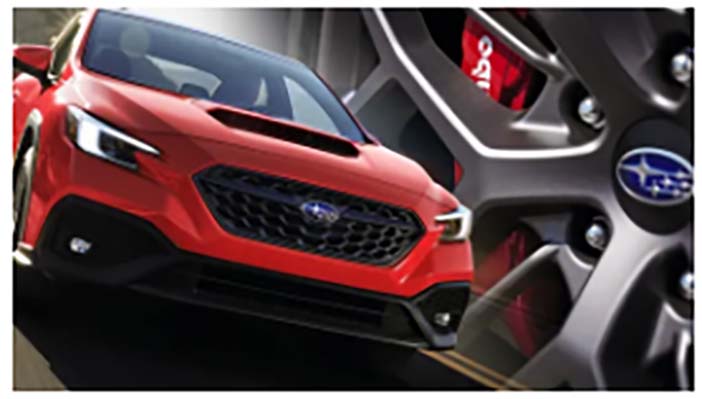
+++ With the long-awaited TESLA CYBERTRUCK expected to start production in the coming weeks, it raises the question of how its introduction to the market will affect the sales of other EV trucks, especially those from startup companies like Rivian. However, the company’s CEO, RJ Scaringe, doesn’t seem too worried about it. At Code 2023, a tech conference in California hosted by Vox Media, Scaringe shared why he doesn’t believe Tesla’s foray into the electric truck market will be too great of a threat. His perspective hinges on the distinct market positioning of the Cybertruck and the R1T. Scaringe believes that the customer base for the Cybertruck differs significantly from that of the R1T and that these 2 vehicles essentially serve different niches within the market. “If you were to think of the Venn diagrams with customers, there’s probably not a lot of overlap”, he said at the conference, according to Yahoo Finance. I’d be inclined to agree, as there’s no denying the bold, futuristic Cybertruck is aimed at a different clientele than the more practical, no-nonsense Rivian. With that in mind, Scaringe clarified that this statement was not to discredit Tesla’s efforts. “I think it’s great that a product like that exists in the world. If we truly want to electrify everything that’s produced (to give us some scale), there’s one and a half billion cars on the planet, and we as a planet produce 90 million a year”, he continued. We’d have to imagine that some of this confidence comes from Rivian’s leg up in terms of market share. They built just under 25.000 vehicles in 2022 and are on track to build double that in 2023, whereas Tesla has yet to deliver a single production unit of the Cybertruck, and may not do so until the end of this year at the earliest. Granted, they do eventually plan on producing 375.000 units per year, but for now, that remains only a target. Not to mention that Tesla isn’t exactly known for staying on track with their projected timelines. Take the Cybertruck‘s introduction itself, for example. It was announced back in 2019, yet it didn’t make it to production for another 4 years, despite Musk’s initial goal of accomplishing it in half that time. Nevertheless, only time will tell how these trucks end up competing with each other, and we’ll just have to wait until the Cybertruck reaches the masses before we get a definitive answer. +++
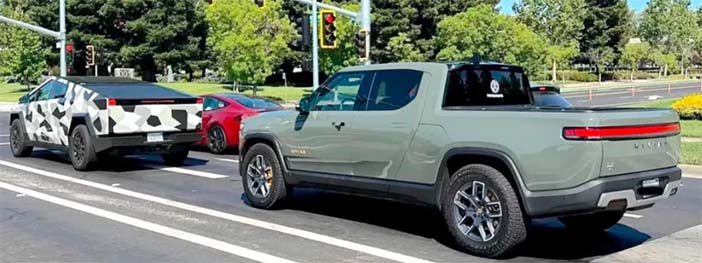
+++ Nobody makes enemies like Donald TRUMP , and his 2024 presidential election campaign promises some interesting new ones. The most recent: electric vehicles. Trump is wading into the autoworkers strike by claiming that EVs threaten blue collar livelihoods. That’s a clear attack on president Biden, who wants to slash carbon emissions by boosting EVs to 50% of new car sales by 2030, from about 7% today. Electric vehicles don’t burn fossil fuels and have no tailpipe emissions, so they help address global warming, as long as the electricity that powers them is relatively clean. Trump has begun calling Biden’s plan a “ridiculous all-electric car hoax” and he blames the United Auto Workers (UAW) leadership for complicity in the scheme. He claims “all of these cars are going to be made in China”, which, if true, would destroy auto worker jobs in the United States. The solution? Elect Trump, of course. The EV attack is a classic Trump tactic: Conflate a real issue with a phony one and embellish the whole thing to the point of absurdity. The real issue is the autoworkers’ quest for better pay, benefits, and job security. Unions have been in steady decline for decades and autoworkers want assurances from General Motors, Ford and Stellantis that they’ll be able to support their families well into the future. The phony issue is the “EV hoax”. EVs are no hoax. Tesla proves that. Tesla has become the world’s most profitable automaker (and a moonshot stock) by putting 4.5 million electric cars on the road and winning rave reviews from buyers. Many automakers now emulate the upstart Tesla, instead of the other way around, because they think Tesla has identified the future of transportation. The absurd embellishment is Trump’s claim about all the EVs coming from China. Trump himself took steps to prevent that when he was president, by imposing new tariffs on Chinese imports. The Trump tariffs are still there. If China starts exporting cars to the United States, it’s a sign that Trump’s own trade policy failed. Time will tell whether Trump’s EV onslaught gets any traction. The UAW endorsed Biden in 2020, and will almost certainly endorse him again in 2024. Trump is clearly trying to roil the union leadership, while lobbying for blue collar votes in crucial swing states such as Michigan and Wisconsin. Biden has his own pitch to those workers. Last year, he signed into law powerful new incentives to build EVs and other green energy components in the United States. The 2022 Inflation Reduction Act included valuable tax breaks for companies that build U.S. factories and hire American workers, including unionized ones. The law is already having a pronounced effect. An unprecedented boom in factory construction is underway, directly linked to the new tax breaks. Manufacturing employment seems sure to rise once those plants come online. Biden may have gotten much more than he bargained for in the IRA. When Congress passed the law last year, budget analysts estimated the green energy tax breaks would cost around $385 billion during the next 10 years. But companies have applied for the tax breaks at a much faster pace than expected, and the 10-year cost now looks to be around $1.2 trillion. Instead of green energy jobs going overseas, foreign firms are coming to the United States, to partner with American companies and build EV battery plants here. The most likely problem isn’t disappearing jobs, it’s a lack of skilled workers to run all the new factories. Autoworkers have one legitimate concern about electric vehicles. They have fewer parts than gas-powered cars and require fewer workers to build. That’s an issue in the strike. But the union’s real worry isn’t a lack of jobs, it’s that many of the new green energy jobs won’t be unionized. Tax breaks in the IRA are generally larger for companies that pay union-level wages, but many companies may opt for smaller tax breaks and non-unionized workers. Other peculiar battle lines seem to be forming. The one person who could rebut Trump’s “EV hoax” with bulletproof authority is Tesla CEO Elon Musk, who has become the world’s richest non-kleptocrat by selling EVs. Musk is Trumpy himself, and he reactivated Trump’s banned Twitter account after buying the social media platform last year. So Musk would have credibility in Trumpworld if he said, “Sorry Don, EVs are the real deal”. But Musk may not want to defang Trump. Musk loathes unions and may enjoy the spectacle of Trump trying to pit union workers against their leaders. Musk also has a beef with Biden, whom he called a “damp sock puppet” last year, because Biden talks up unionized Detroit automakers while mostly ignoring non-unionized Tesla. Trump is the enemy of not one, but 2 of Musk’s own enemies, which could make him doubly useful to Musk. Contrary to what Trump says, electric vehicles are increasingly affordable, pragmatic, and economically viable as a business. While not a panacea, they help cut carbon emissions and contain global warming. For people who don’t want an EV, gas-powered cars will still be available for years and probably decades. Biden’s policies are speeding the transition to greener cars, but not killing the traditional car business. Trump’s propaganda succeeds, however, when the facts are a little bit complicated and a few misleading claims can leave voters confused. He’s now employing that formula to vilify EVs and their big champion, Biden. EVs are here to stay, but they’re now politicized like seemingly everything else in America. +++

